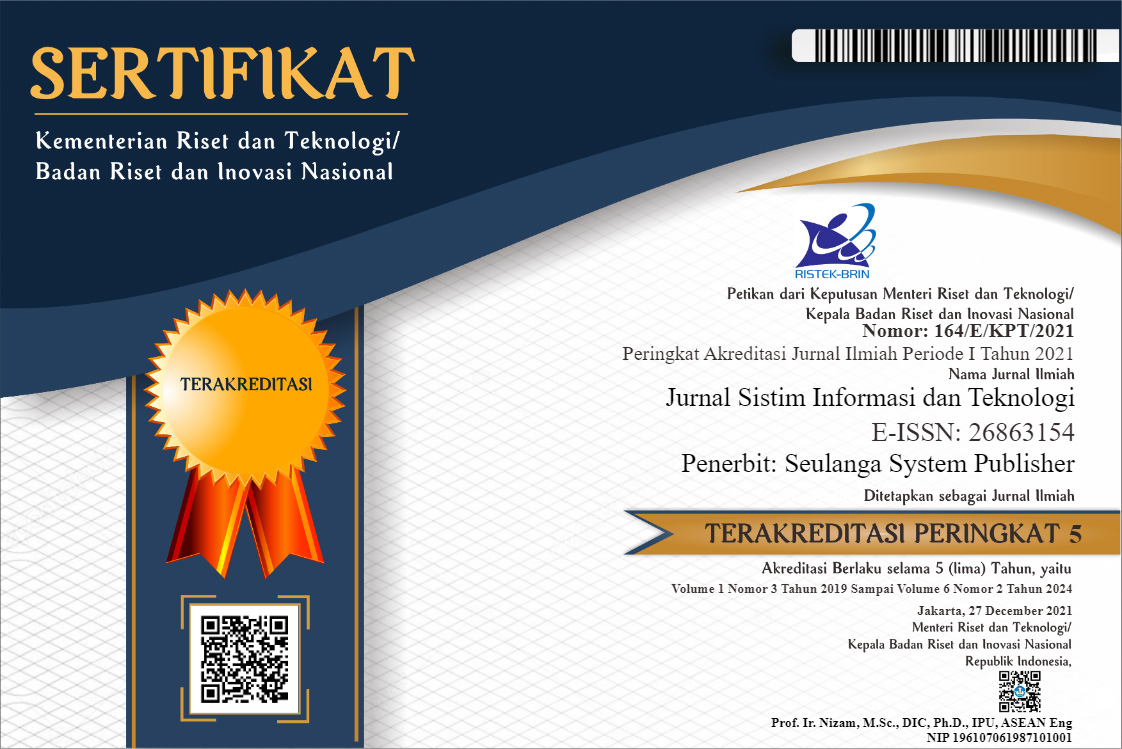The Implementation of Android-Based Gamification to Design an Interactive Quiz Educational Game for Support Learning Activities
DOI:
https://doi.org/10.37034/jsisfotek.v5i2.245Keywords:
Technology, Smartphone, Learn, Games, GamificationAbstract
Today's gadget technology has developed rapidly and has many features, along with the expansion of the internet network. In Indonesia alone, according to a survey from APJII, as much as more than 50% of the population has smartphone gadgets for daily use, and as much as more than 75% are dominated by children aged 12 years and over. However, only a few use smartphones for learning, which will affect smartphone users in terms of changing attitudes, behaviors, and motivation for learning. For this reason, the authors designed a quiz educational game application for learning, especially learning English, that utilizes gamification to increase children's motivation to learn while playing so they don't feel bored. The system was created using the GDLC development method with the Unity 3D Engine software, and for the Gamification system, using the Shephertz App42 API. Alpha testing shows that the functions in the game run well, and the gamification function works well and according to its function. The BETA test shows that the students taught by the author can improve their understanding of the English subject matter through the educational games made.
References
Binarsatya, B. A., & Sani, N. A. (2018). Design and Build Avatar Game Applications by Applying Gamification to Increase Interest. 7(1), 1–3.
Budiman, E., Hasudungan, R., & Khoiri, A. (2017). Online Game “Pics and Words” As Html-Based English Educational Media. 2(1), 1–6.
Jusuf, H. (2016). The Use of Gamification in the Learning Process. 5(1), 1–6.
Meisarah, F., Octiva, C. S. ., Sucipto, P. A. ., Satyaninrum, I. R. ., & Bakri, A. A. (2023). Improving Student Text Writing Ability by Utilizing the Use of Augmented Reality Feature. Jurnal Sistim Informasi Dan Teknologi, 5(1), 129–134.
Kevin, A. A. (2017). Macromedia Flash-Based English Educational Game Application Using the Waterfall Method. 01(07).
Siswanto, Y., & Eka Purnama, B. (2013). Design and build a Natural Science Educational Game Mobile Application for Grade VI Elementary School Children. 5(4), 32–37.
Kumar, G. S., Priyadarshini, R., Parmenas, N. H., Tannady, H., Rabbi, F., & Andiyan, A. (2022, November). Design of optimal service scheduling based task allocation for improving CRM in cloud computing. In 2022 Sixth International Conference on I-SMAC (IoT in Social, Mobile, Analytics and Cloud)(I-SMAC) (pp. 438-445). IEEE.
Wahyu Putra, D., Nugroho, A. P., & Puspitarini, E. W. (2016). Android-Based Educational Games As Learning Media For Early Childhood. 1(1), 46–58.
Madyatmadja, E. D., Liliana, L., Andry, J. F., & Tannady, H. (2020). Risk analysis of human resource information systems using COBIT 5. Journal of Theoretical and Applied Information Technology, 98(21), 3357-3367.
Sutrisno, S., Tannady, H., Ekowati, D., MBP, R. L., & Mardani, P. B. (2022). Analisis Peran Kualitas Produk Dan Visual Identity Terhadap Purchase Intention Produk Teh Dalam Kemasan. Management Studies and Entrepreneurship Journal (MSEJ), 3(6), 4129-4138.
Tannady, H., Andry, J. F., Suyoto, Y. T., & Herlian, A. (2020). Business Architecture of Public Guest Service for University Using TOGAF ADM Framework. Technology Reports of Kansai University, 62(5), 2421-2428.
Downloads
Published
How to Cite
Issue
Section
License
Copyright (c) 2023 Jurnal Sistim Informasi dan Teknologi

This work is licensed under a Creative Commons Attribution 4.0 International License.









